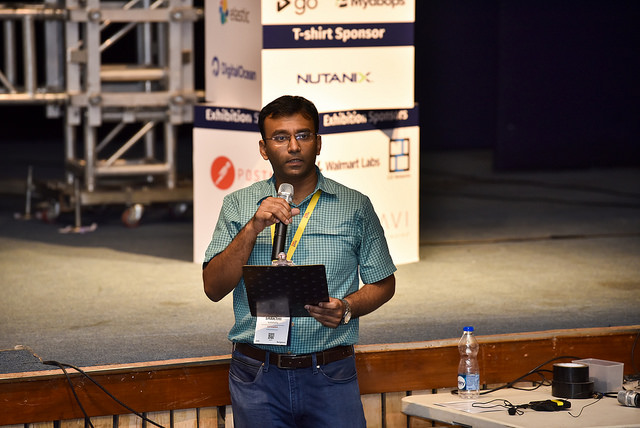
Jun 2019
17 Mon
18 Tue
19 Wed
20 Thu
21 Fri 08:45 AM – 05:40 PM IST
22 Sat 09:00 AM – 05:30 PM IST
23 Sun
Jun 2019
17 Mon
18 Tue
19 Wed
20 Thu
21 Fri 08:45 AM – 05:40 PM IST
22 Sat 09:00 AM – 05:30 PM IST
23 Sun
##About Rootconf 2019:
The seventh edition of Rootconf is a two-track conference with:
##Topics and schedule:
View full schedule here: https://hasgeek.com/rootconf/2019/schedule
Rootconf 2019 includes talks and Birds of Feather (BOF) sessions on:
##Who should attend Rootconf?
For information about Rootconf and bulk ticket purchases, contact info@hasgeek.com or call 7676332020. Only community sponsorships available.
##Rootconf 2019 sponsors:
#Platinum Sponsor
 |
 |
 |
#Gold Sponsors
 |
 |
 |
#Silver Sponsors
 |
 |
 |
#Bronze Sponsors
 |
 |
 |
 |
 |
 |
#Exhibition Sponsor
 |
 |
 |
#Community Sponsors
 |
 |
 |

Shakthi Kannan, senior DevOps engineer at Aerospike
21 Jun 2019, 10:05 AM
Ratnadeep Debnath, Aravind Putrevu, Ramya A T
21 Jun 2019, 11:05 AM

Lavakumar Kuppan, co-founder at Ironwasp Security
21 Jun 2019, 11:45 AM

Kushal Das, public interest technologist at the Freedom of the Press Foundation
21 Jun 2019, 12:05 PM

Anand Venkatanarayanan
21 Jun 2019, 2:40 PM
NIMHANS Convention Centre
NIMHANS Convention Centre
Hosur Road, Lakkasandra
Bangalore - 560029
Karnataka, IN
Hosted by